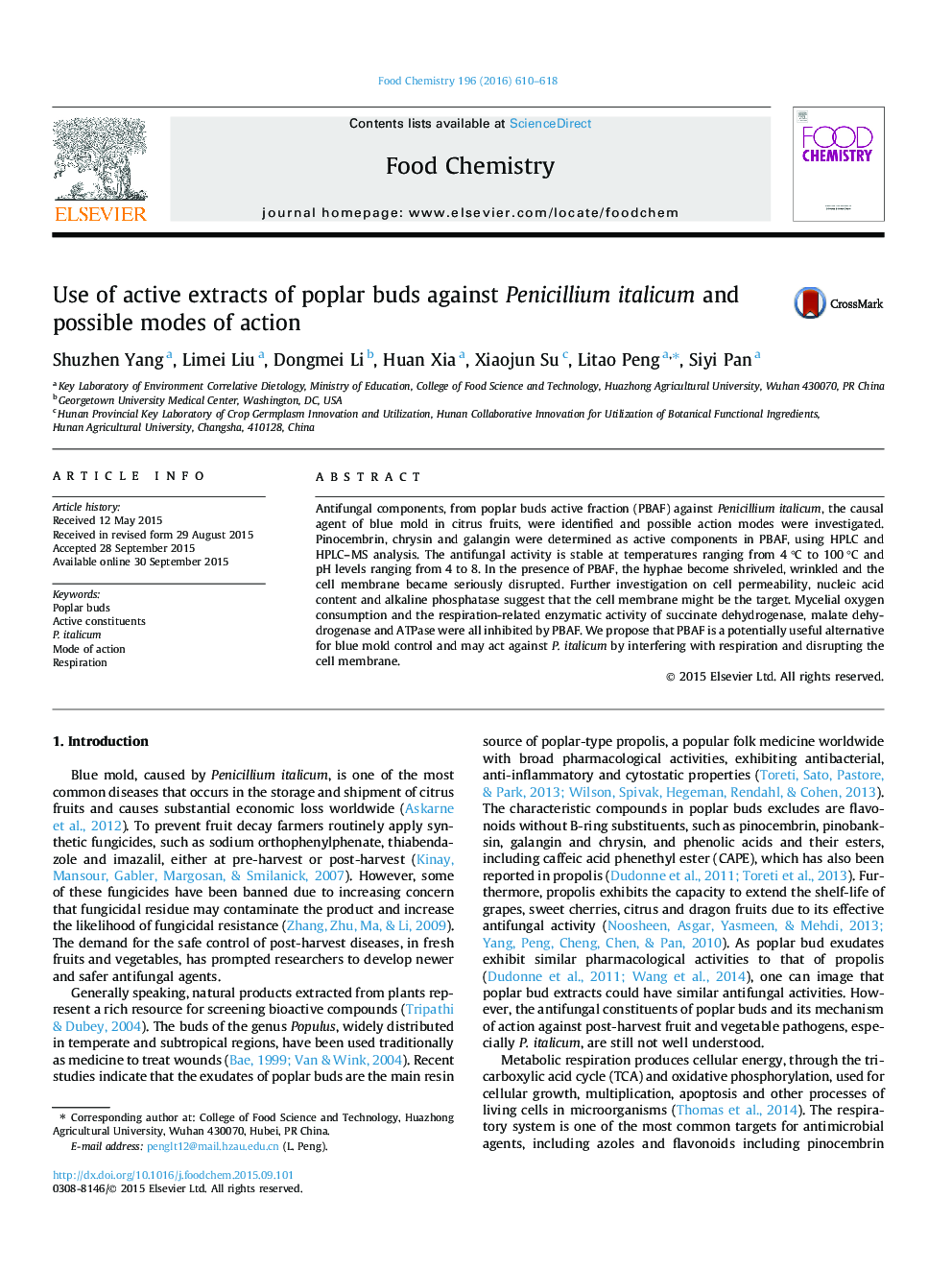| Article ID | Journal | Published Year | Pages | File Type |
|---|---|---|---|---|
| 1184185 | Food Chemistry | 2016 | 9 Pages |
•Pinocembrin, chrysin and galangin are the bioactive components in PBAF.•The antifungal activity of PBAF is stable under wide ranges of pH and temperature.•PBAF alters the morphology of hyphae and disrupts the cell membrane of P. italicum.•PBAF decreases respiration and inhibits SDH, MDH and ATPase of hyphal cells.
Antifungal components, from poplar buds active fraction (PBAF) against Penicillium italicum, the causal agent of blue mold in citrus fruits, were identified and possible action modes were investigated. Pinocembrin, chrysin and galangin were determined as active components in PBAF, using HPLC and HPLC–MS analysis. The antifungal activity is stable at temperatures ranging from 4 °C to 100 °C and pH levels ranging from 4 to 8. In the presence of PBAF, the hyphae become shriveled, wrinkled and the cell membrane became seriously disrupted. Further investigation on cell permeability, nucleic acid content and alkaline phosphatase suggest that the cell membrane might be the target. Mycelial oxygen consumption and the respiration-related enzymatic activity of succinate dehydrogenase, malate dehydrogenase and ATPase were all inhibited by PBAF. We propose that PBAF is a potentially useful alternative for blue mold control and may act against P. italicum by interfering with respiration and disrupting the cell membrane.
Graphical abstractFigure optionsDownload full-size imageDownload as PowerPoint slide
